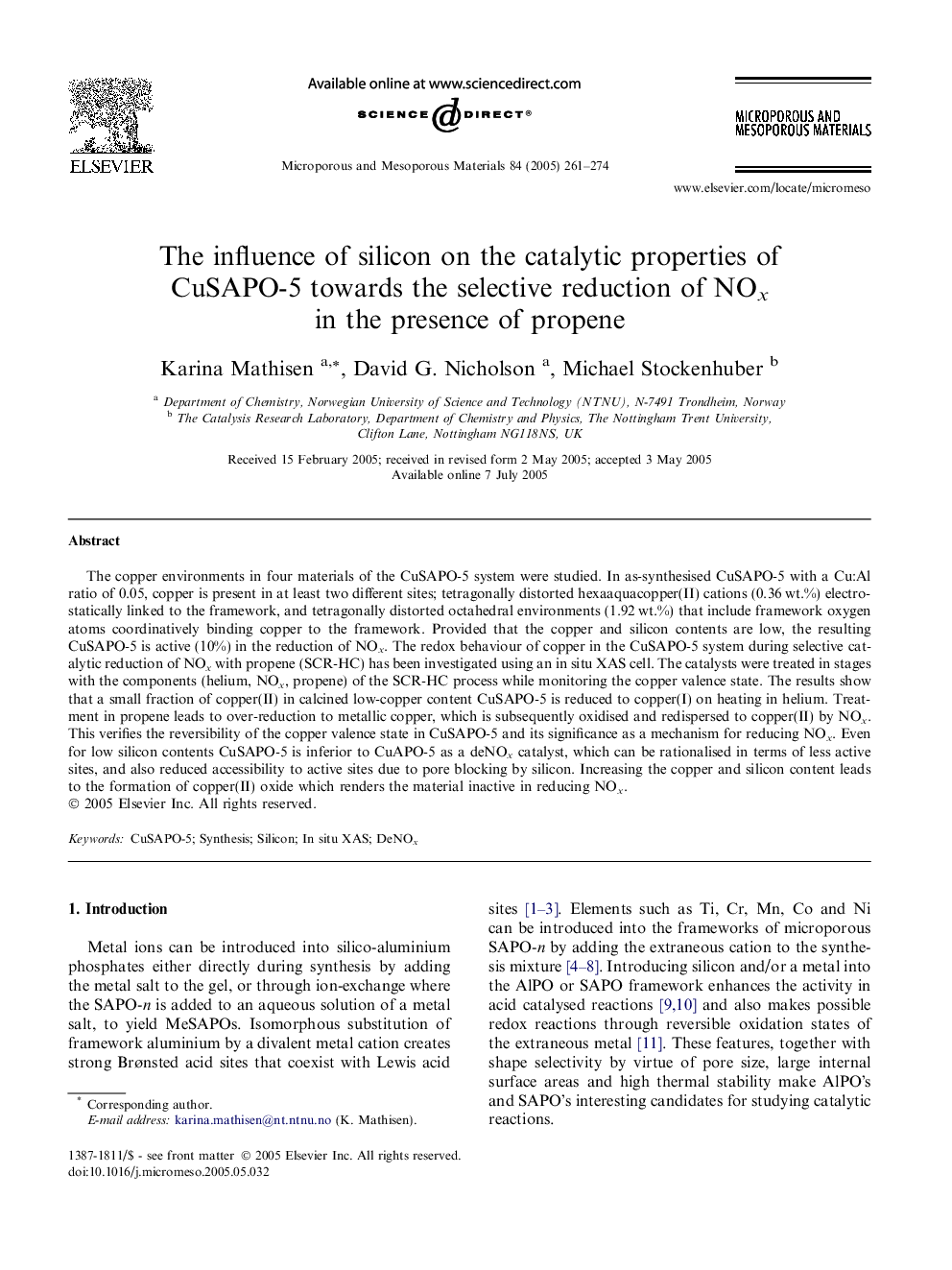| Article ID | Journal | Published Year | Pages | File Type |
|---|---|---|---|---|
| 9617613 | Microporous and Mesoporous Materials | 2005 | 14 Pages |
Abstract
The copper environments in four materials of the CuSAPO-5 system were studied. In as-synthesised CuSAPO-5 with a Cu:Al ratio of 0.05, copper is present in at least two different sites; tetragonally distorted hexaaquacopper(II) cations (0.36Â wt.%) electrostatically linked to the framework, and tetragonally distorted octahedral environments (1.92Â wt.%) that include framework oxygen atoms coordinatively binding copper to the framework. Provided that the copper and silicon contents are low, the resulting CuSAPO-5 is active (10%) in the reduction of NOx. The redox behaviour of copper in the CuSAPO-5 system during selective catalytic reduction of NOx with propene (SCR-HC) has been investigated using an in situ XAS cell. The catalysts were treated in stages with the components (helium, NOx, propene) of the SCR-HC process while monitoring the copper valence state. The results show that a small fraction of copper(II) in calcined low-copper content CuSAPO-5 is reduced to copper(I) on heating in helium. Treatment in propene leads to over-reduction to metallic copper, which is subsequently oxidised and redispersed to copper(II) by NOx. This verifies the reversibility of the copper valence state in CuSAPO-5 and its significance as a mechanism for reducing NOx. Even for low silicon contents CuSAPO-5 is inferior to CuAPO-5 as a deNOx catalyst, which can be rationalised in terms of less active sites, and also reduced accessibility to active sites due to pore blocking by silicon. Increasing the copper and silicon content leads to the formation of copper(II) oxide which renders the material inactive in reducing NOx.
Keywords
Related Topics
Physical Sciences and Engineering
Chemical Engineering
Catalysis
Authors
Karina Mathisen, David G. Nicholson, Michael Stockenhuber,
